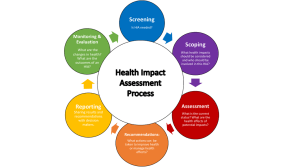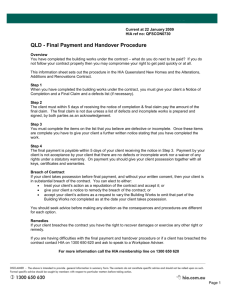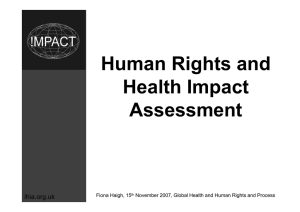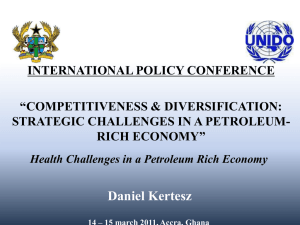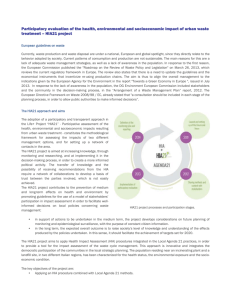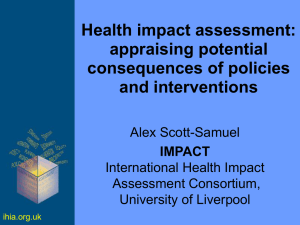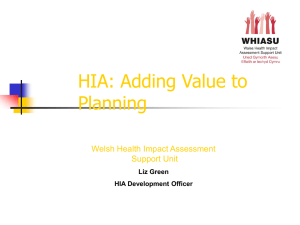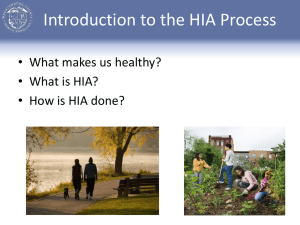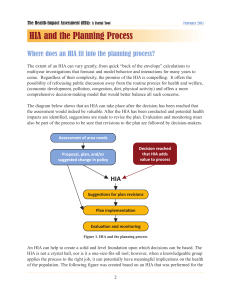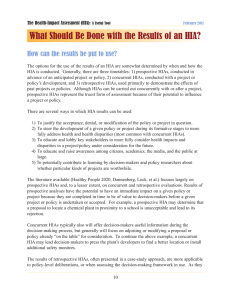Human Rights and Health Impact Assessment
advertisement
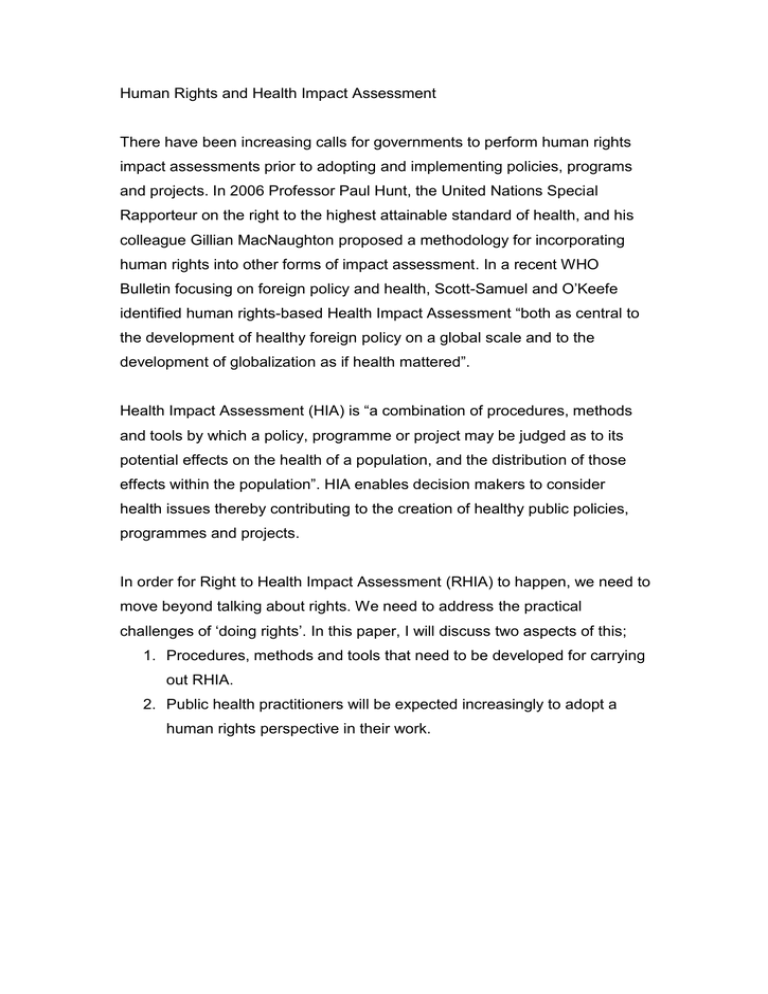
Human Rights and Health Impact Assessment There have been increasing calls for governments to perform human rights impact assessments prior to adopting and implementing policies, programs and projects. In 2006 Professor Paul Hunt, the United Nations Special Rapporteur on the right to the highest attainable standard of health, and his colleague Gillian MacNaughton proposed a methodology for incorporating human rights into other forms of impact assessment. In a recent WHO Bulletin focusing on foreign policy and health, Scott-Samuel and O’Keefe identified human rights-based Health Impact Assessment “both as central to the development of healthy foreign policy on a global scale and to the development of globalization as if health mattered”. Health Impact Assessment (HIA) is “a combination of procedures, methods and tools by which a policy, programme or project may be judged as to its potential effects on the health of a population, and the distribution of those effects within the population”. HIA enables decision makers to consider health issues thereby contributing to the creation of healthy public policies, programmes and projects. In order for Right to Health Impact Assessment (RHIA) to happen, we need to move beyond talking about rights. We need to address the practical challenges of ‘doing rights’. In this paper, I will discuss two aspects of this; 1. Procedures, methods and tools that need to be developed for carrying out RHIA. 2. Public health practitioners will be expected increasingly to adopt a human rights perspective in their work.
